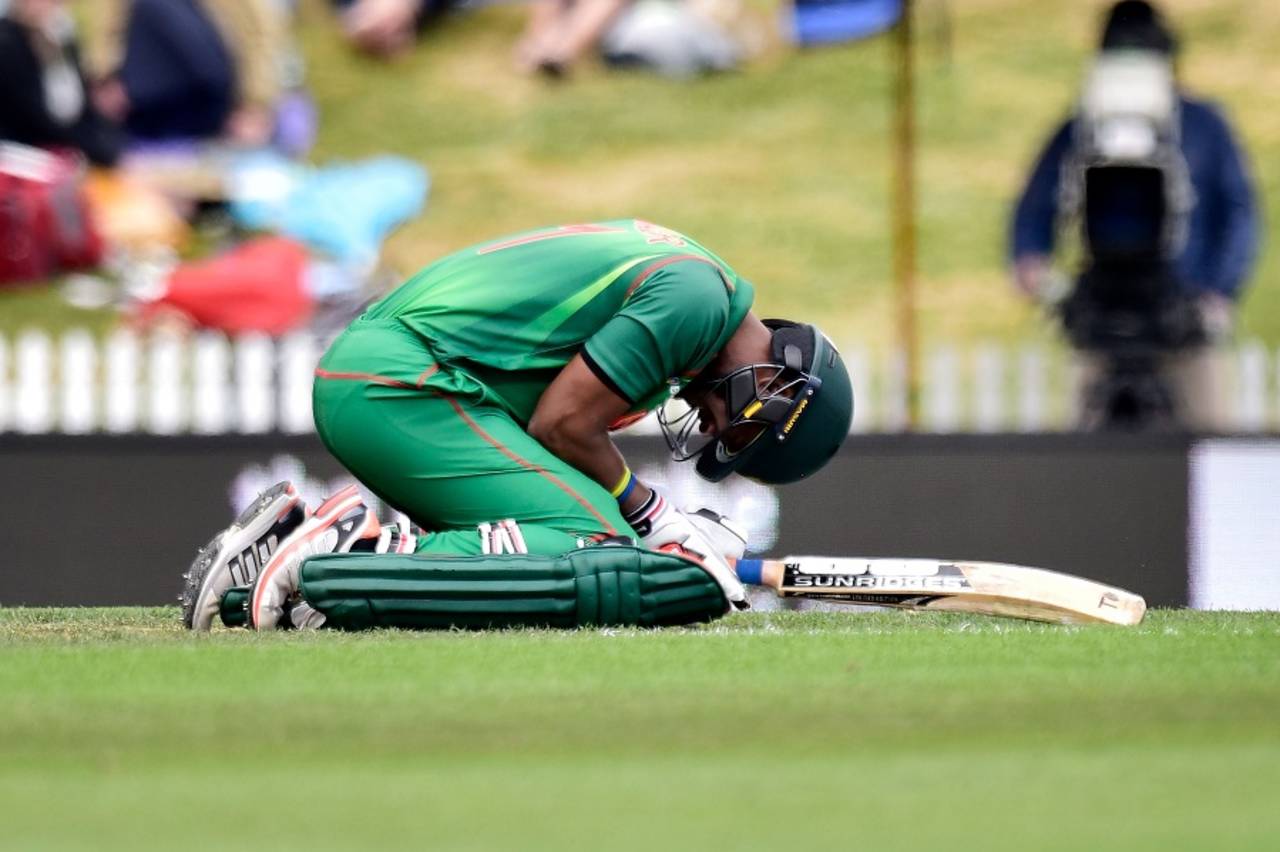Bangladesh's year of the collapse
Bangladesh ended 2016 like they had begun it, with a batting collapse that was a recurrent feature in their limited-overs performances this year

Sabbir Rahman made a big splash in 2015, not so much this year • AFP
Bangladesh's collapses in 2016
3 for 0 chasing v Ind, Bangalore T20
7 for 62 batting first v Afg, Dhaka ODI
7 for 54 batting first v Afg, Dhaka ODI
6 for 67 batting first v Afg, Dhaka ODI
6 for 17 chasing v Eng, Dhaka ODI
9 for 49, 1st innings v Eng, Mirpur Test
9 for 79 chasing v NZ, Nelson ODI
7 for 77 batting first v NZ, Nelson ODI

Mohammad Isam is ESPNcricinfo's Bangladesh correspondent. @isam84